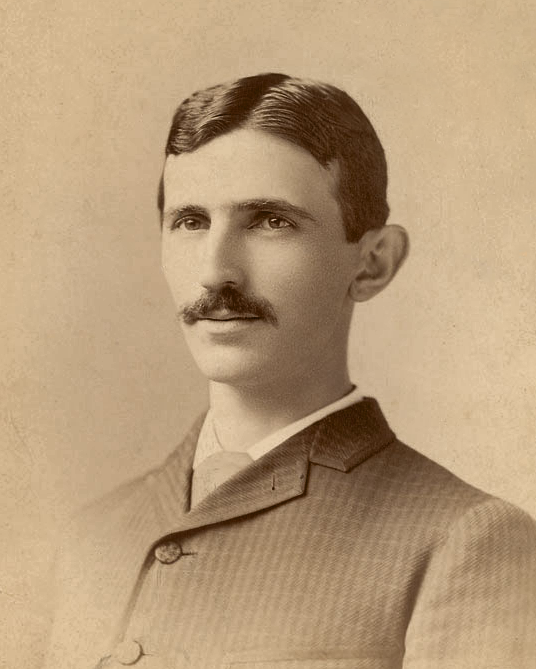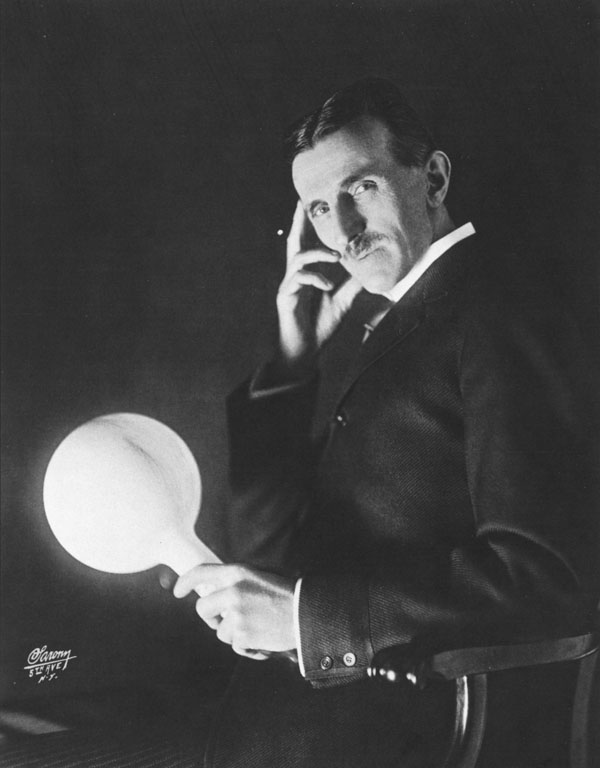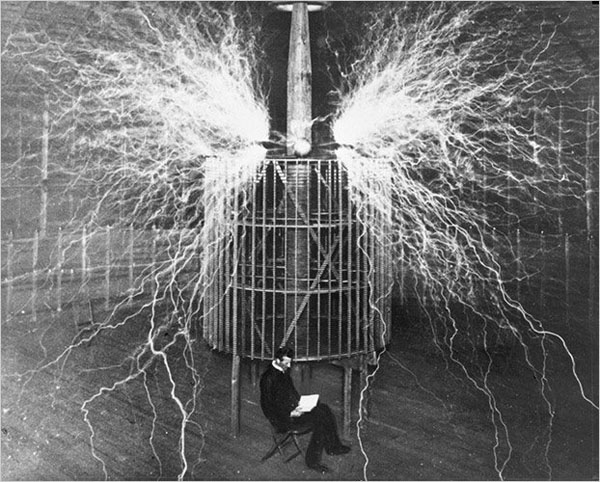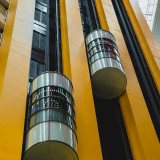The Life and Works of Nikola Tesla
When making a list of history's smartest people, Nikola Tesla occupies a well-earned space near the top. One of the leading minds of the 19th and early 20th century, Tesla revolutionized electricity as we knew it and paved the way for much of the modern world's gadgetry and appliances.
However, Telsa didn't get this way overnight. Like with many prolific people, the story of Nikola Tesla is a long and winding affair filled with eccentricity and intrigue. To better understand this complex man and all he did for the world, let's dive into the life and works of Nikola Tesla.
Humble Beginnings
Born in 1856, Tesla began life in the Austrian Empire in the area know today as Smiljan, Croatia. From an early age, Tesla's intelligence had already shown itself, something he would credit to his mother, Ðuka Tesla. Despite having no formal education herself, Mrs. Tesla was quite gifted in crafting, mechanics and poetry, all skills she passed on to her son that sparked his interests in creating and learning.
Nikola's family consisted of himself, his two parents and his four siblings. His father supported the family as a priest while his mother tended to the family farm in addition to raising the rest of them. While much of his early life during this time seemed to be uneventful, tragedy struck when his older brother Dane was killed while riding a horse, an event that left such a mark on Nikola that he'd frequently see visions of the accident appear suddenly in his mind.1
Tesla himself was frequently ill at different points in his life, one of the worst cases happening in 1873 when he contracted cholera after graduating high school. Having seen demonstrations of electricity during his studies, Tesla vowed to become an engineer upon recovery, something his father desperately agreed to in the hopes that it would somehow motivate his recovery after nine months of near-fatal sickness.2
.jpg) Nikola Tesla at the age of 23.
Nikola Tesla at the age of 23.
Though he did recover, Tesla did not immediately resume his studies. Avoiding the draft in 1874, he moved south to explore the wilderness, claiming to grow stronger in both mind and body from exposure to the outside. During this time he read many books, in particular those written by his future friend Mark Twain.
A year later, Tesla enrolled at the Austrian Polytechnic in Graz, attending via a Military Frontier scholarship. The results of his study were legendary, Tesla achieving above and beyond in virtually every regard from scoring the highest grades possible in all subjects to excelling in extra curricular activities like his self-founded Serbian culture club. Even as early as his second year, he was already figuring out ways to improve electrical contraptions. Unfortunately, his suggested changes to how the Gramme dynamo could function brought him into conflict with one of his professors.
Complications arose after that, with Tesla losing his scholarship by the end of his second year of schooling. After that, he became addicted to gambling, his luck turning so sour as to destroy his allowance and tuition money at its worst - though he did miraculously win enough back to repay his debts to his family. Tesla cited this experience as what convinced him to change, swearing off gambling for many years.
Despite his recovery from gambling, Tesla still dropped out of school by the end of his third year. Overall, his work ethic and grades had declined by then, presumably a result of his addiction and ludicrously intensive work schedule ("3 a.m. to 11 p.m., no Sundays or holidays excepted" according to his autobiography) up to that point taking its toll.
After dropping out, Tesla alienated himself from virtually all contact, family included. Be it out of pride, shame or some other reason, he did not seem to want his family knowing that he'd left school. He chose to move to Maribor, Slovenia at this time, spending his days as a draftsman at an engineering firm and drinking and playing cards at a local pub. His father did eventually learn of what became of his son and even tracked him down to try and convince him to come home, but Tesla refused.
However, Tesla was forced to return to his family home not long after this meeting, after suffering a one-two punch of a nervous breakdown and getting into trouble with the authorities for not having had a residence permit to live in Maribor. A month later, his father died.
1879 wasn't all bad for the young Tesla, however. Though still reeling from his forced move and father's death, he took up work teaching at his old primary school. In 1880, two of his uncles pooled their resources to help him move to Prague, hoping for him to enroll at the Charles-Ferdinand University and continue his studies. Unfortunately, he arrived too late and did not meet the language requirements to be accepted, so Tesla had to settle for attending non-credit philosophy lectures at the school before promptly moving to Hungary a year later.
Innovation Strikes
After arriving in Budapest, Tesla found work at Tivadar Puskás' Budapest Telephone Exchange. This was a bit premature, though, as the office (still under construction at the time) was not at all functional. Tesla chose to work at the Central Telegraph Office as a draftsman while the office was being completed. He returned to the Exchange once it was fit enough to work, becoming chief electrician and almost singlehandedly overhauling the entire process to be more efficient.3
This employment was short-lived though, with Puskás himself getting Tesla a new job in Paris at the Continental Edison Company. In 1882, Tesla moved to France to work for the company as an electrician, a job which involved installing indoor incandescent lighting across all of Paris. These experiences gave Tesla a large amount of practical experience in engineering, a skill that he had largely lacked up to this point. His strides in the subject did not go unnoticed, and his employers eventually moved him into a design position optimizing and improving dynamos and other equipment at both the Paris offices and other locations in France and Germany.
 Nikola Tesla circa 1885
Nikola Tesla circa 1885
Tesla was considered such a valuable asset to the company that, in 1884, he was moved to New York City along with one of Edison's managers to oversee operations at the Edison Machine Works manufacturing facility.4 Working and living conditions were dour, with Tesla packed in along side many other laborers in the Lower East Side. Even so, he continued to work diligently, even impressing Thomas Edison himself.
Tesla's employment under Edison lasted only around six months before he unceremoniously quit. While his exact reasons for leaving are somewhat muddled, the various accounts from Tesla, Edison and others point to miscommunication and unpaid wages and bonuses.4
Regardless of the reason, Tesla was now free to work on his own ideas in America. In 1885, he met with a patent attorney to learn how to submit his own ideas for an arc lighting system (rumored to be a rejected idea he came up with while working for Edison). After being introduced to investors Robert Lane and Benjamin Vail, the three started the Tesla Electric Light & Manufacturing Company.5 While early patents were approved and some success was found, both Lane and Vail eventually left the company, and Tesla ultimately lost control of his early patents and eventually shuttered the business due to a lack of funding.
Tesla Finds Success
Tesla would later comment that the winter of 1886 was one of the worst times in his life. Betrayed, penniless and forced to survive performing menial labor like ditch digging, the inventor's dreams seemed all but crushed. Hard as it was, Tesla's luck would soon change after meeting Charles F. Peck and Alfred S. Brown, two men looking to invest in him after seeing examples of his genius for themselves. The three went into business together and started the Tesla Electric Company.4
The three found great success, especially after Tesla's creation of the alternating current induction motor. With Peck and Brown's skills in business and marketing, the three turned a hefty profit and gained fame for their work. This fame attracted the attention of fellow engineer George Westinghouse, and Tesla eventually went to work for him as a consultant in 1888 as part of a deal licensing his AC motor designs to Westinghouse's business in Pittsburgh. Though he often found himself in conflict with other engineers, Tesla was well compensated for his work.
 Nikola Tesla showing off one of his electric lights.
Nikola Tesla showing off one of his electric lights.
The following years were of great difficulty for Westinghouse, as the "war of the currents" between his, Edison's, and the Thomas-Houston Electric Company grew more intense. Eventually, Westinghouse was forced to scale back operations and restructure to avoid losing everything he owned. This included changing the terms of his deal with Tesla, as Westinghouse could no longer afford the royalties for use of his AC motor patent as previously agreed. Given the many benefits of having the larger company on his side, Tesla agreed to this and even sold the patent to him outright years later.4
By 1889, Tesla seemed to be on top. All the money he'd made in collaboration with Westinghouse meant he was able to pursue his own interests as his many patents and inventions provided a steady stream of income. Much of his research during these days was conducted in a series of Manhattan laboratories. By 1890, Tesla was already hard at work on creating wireless electricity, with 1891 seeing the creation of the Tesla coil. Also in 1891, he was officially naturalized as an American citizen.
Wireless power became something of an obsession for Tesla during the next few years. During his time as vice-president of the American Institute of Electrical Engineers, he accomplished many things while experimenting with radio waves, including remote control of a model boat and basic radio communication.4 He was also responsible for various steam-based inventions, x-ray experiments and helped build a power station along with Westinghouse and General Electric located at Niagra Falls.
Things began a downward turn in 1895, with a fire breaking out at the newly created Nikola Tesla Company laboratory. A large amount of early notes and current research were lost in the blaze. Though he was able to resume operations within the next few months, the fire was a major blow to morale for Tesla.
Even so, he did not back down when it came to creating. In addition to his radio and x-ray experiments, Tesla also began giving lectures at universities around the United States. Tesla eventually moved to Colorado Springs in 1899, working at a laboratory there where he discovered the ground's ability to conduct electricity. There he was also able to create lightning with his magnifying transmitter.
The Later Years
Tesla moved back to New York in 1900, shamed by the scientific community after claiming that alien beings had tried to contact him through rhythmic pulses picked up by his equipment. But this did little to slow him down as the inventor began work on a world broadcasting tower on Long Island with a substantial investment from J.P. Morgan. Things did not go as planned here, though. The project was not coming along as quickly or effectively as hoped and Morgan eventually pulled financial support due to costs. To make matters worse, Guglielmo Marconi (Tesla's sworn rival) managed to beat him to the punch by sending radio signals across the Atlantic in the same year.
Abandoning his broadcast tower, Tesla turned his attention to turbines as his next step in electrical generation. Though he lacked the money to put these designs through testing, he recorded all his ideas in notebooks as he looked for new investors. He periodically came back to Morgan and his son in hope of new funding, but Tesla was refused each time.
 Nikola Tesla at work in his laboratory.
Nikola Tesla at work in his laboratory.
This cycle repeated itself for close to a decade, with Tesla's lack of investors and poor money management leaving many of his recent breakthroughs in the realm of theory. While he was recognized for a number of accomplishments, including the 1917 Edison Medal6, it was clear to all that Tesla's zest for life as well as general state were rapidly deteriorating.
By the 1910's, Tesla had grown more and more reclusive. He was also noted as having developed a severe fear of germs as well as a strange and unhealthy relationship with pigeons that frequented a nearby library, with Tesla claiming that he could communicate with them when he visited to feed them.
In spite of all of this, Tesla's turbine designs did eventually reach their final stage. He briefly moved to Chicago after this to try and find work on them but returned to New York shortly after, staying in various hotels starting in 1922 and making a habit of frequently changing locations to avoid paying his bills.
Tesla became famous in this era less so for his inventions and more for his futurist beliefs and fantastical claims. In addition to speculating on what kind of technology humanity would come to invent (even predicting radar), he also made claims of it being possible to contact life on other planets. One of his most famous claims was that he had created a death ray that he kept under lock and key.
Tesla died in 1943. His health had continued to decline over the decades, and an automobile accident a few years prior left him with injuries made all the worse by his refusal to seek medical help. He passed away in Room 3327 of the New Yorker Hotel at age 86. Autopsies revealed the cause of death to be coronary thrombosis.
Following his death, the FBI ordered his belongings seized to verify his claims about his death ray (among other reasons). The device was never found. Though he did not live to see it, 1943 was also the year that several of Marconi's patents on radio technology were struck down by the Supreme Court, Tesla's experiments being used to recognize him as the true creator of those works posthumously.
References
- https://books.google.com/books?id=ti2Jt7XarzMC&hl=en
- https://en.wikipedia.org/wiki/Nikola_Tesla#Early_years
- https://teslauniverse.com/nikola-tesla/timeline/1856-birth-nikola-tesla#goto-274
- https://books.google.com/books?id=5I5c9j8BEn4C
- https://books.google.com/books?id=DzMR8x_rbPgC
- https://teslauniverse.com/nikola-tesla/timeline/1856-birth-nikola-tesla#goto-306
Recent Posts
-
Henry Ford: Automotive Visionary
Henry Ford was one of the pioneers of the automotive industry. Even today, 120 years after it was f
-
The Rise of the Elevator
For many people, elevators are one of those parts of everyday life that you just don't think about.




